
(Photos credit : Multiplex and Infrastructure NSW)
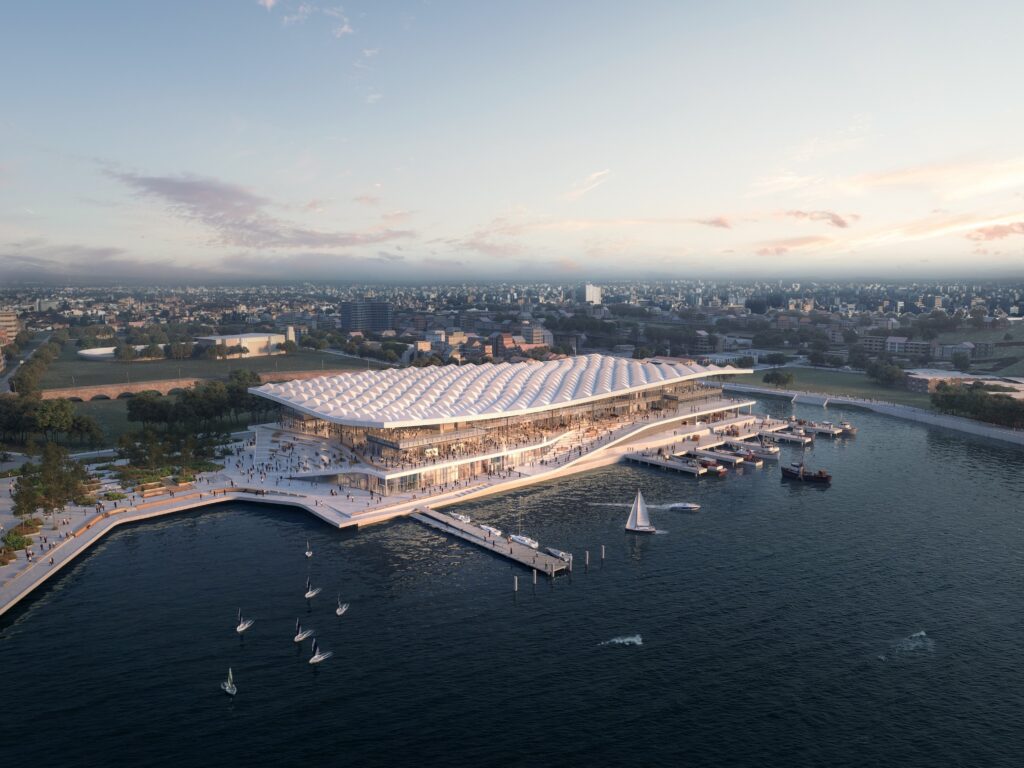
Cross the Anzac Bridge at dusk, and you can't miss it: a wave-shaped roof arching 200 meters across Blackwattle Bay, its 400 solar panels glowing in technicolor against the darkening sky. This isn't the old fish market with a facelift. It's an entirely new building—Sydney's boldest architectural statement since Jørn Utzon sketched his opera house on a napkin.
After decades of planning and four years of construction, the brand-new Sydney Fish Market opens its doors on January 19, 2026. The timing is deliberate. While locals make their final pilgrimage to the beloved Pyrmont site for one last legendary 36-hour Christmas seafood marathon—a Sydney ritual since 1966—the new facility prepares to welcome six million annual visitors to an entirely reimagined experience.

Danish architects 3XN, working with Sydney firms BVN and Aspect Studios, conceived the building as a love letter to the fishing industry. The distinctive roof, assembled from 594 glulam beams and weighing 2,500 tonnes, pays homage to fish scales and ocean swells. But this is no static monument. Those scale-like cassettes house solar panels that illuminate in shifting colors for events like Vivid Sydney, connected by more than four kilometers of cabling in an installation that transforms the building into a beacon after dark.
The feat of engineering is equally impressive. Built over water at the head of Blackwattle Bay, the structure rests on 400 marine piles driven deep into the seabed.
The location itself marks a transformation. The new market sits 900 meters from the original Pyrmont site, in an area previously closed off by industrial uses. For the first time since the 19th century, Sydneysiders can access the head of Blackwattle Bay—a prime harbourside location that's about to become one of the city's hottest destinations.
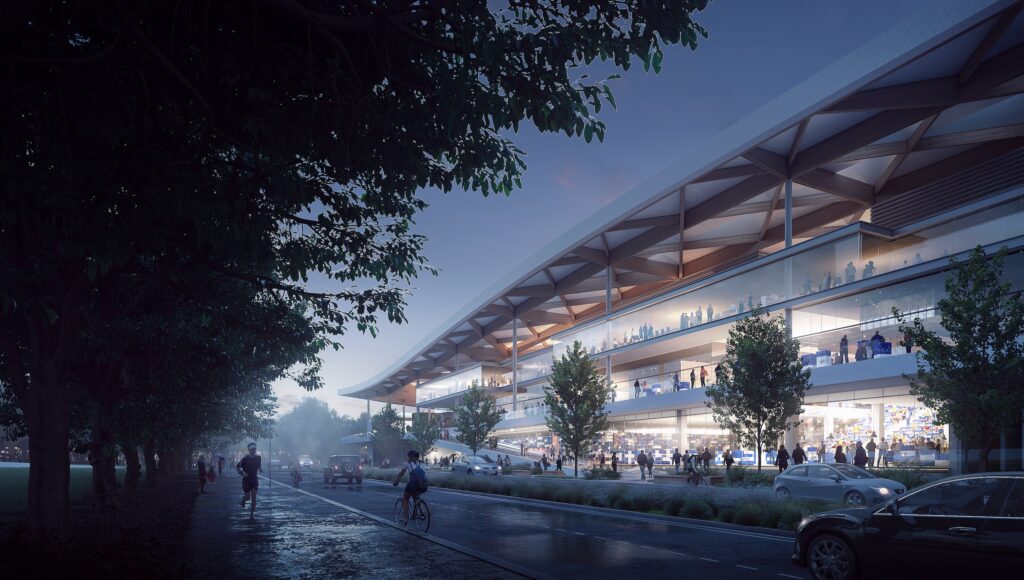
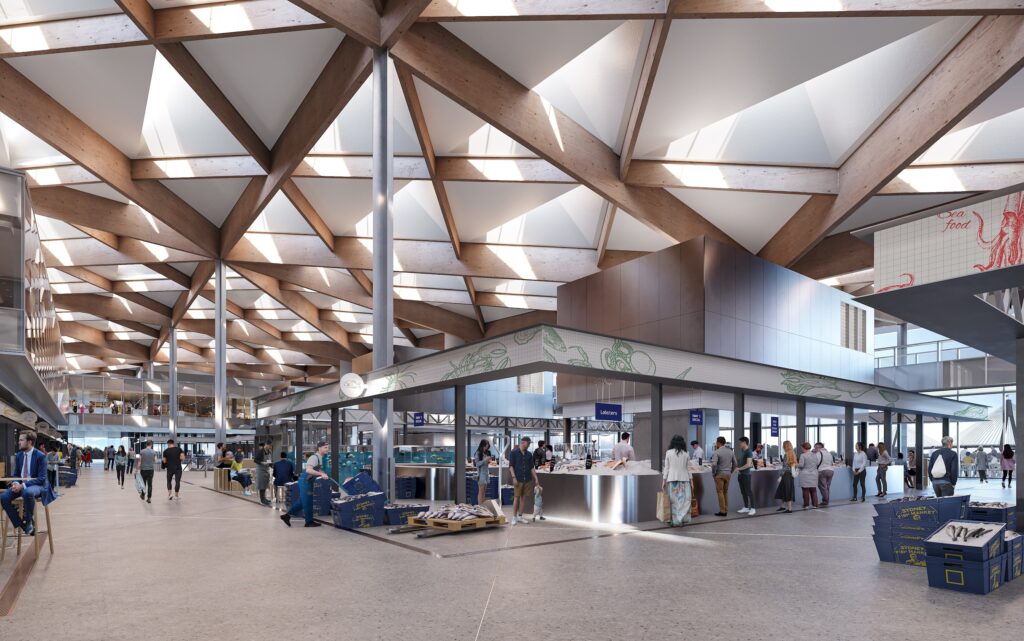
The new facility more than doubles the old market's retail space, expanding from 6,582 to 15,500 square meters across three levels. But square footage alone doesn't capture the transformation. For the first time, the market will stay open until 10pm daily—turning what was once a morning destination into an all-day harbourside experience.
Picture golden hour on the water: Anzac Bridge glowing in the background, a plate of sashimi in one hand, gelato from award-winning Cow & The Moon in the other. This is the vision Daniel Jarosch, Sydney Fish Market's CEO, has pursued for years. "We've waited decades for this new market," he says. "Taking this time means we can open with a bang."
Nearly all the original retailers have signed on to make the move, but they'll be joined by a carefully curated roster of new vendors. Luke Nguyen's flagship Southeast Asian restaurant Lua anchors the dining options, alongside Malaysian street food from Tam Jiak by Ho Jiak, German baked goods from award-winning Luneburger, and Turkish charcoal cooking from Hamsi by the celebrated Efendy Group. There's Olivetta, Sydney's first specialty olive oil concept store, and TJ's Po Boys serving lobster rolls and craft beer. Dirty Red and Touch Wood, Sydney favorites from the old location, will occupy prominent positions in the expanded space.
More than 40 businesses total will occupy the building—fishmongers, cafes, bars, delis, and even a flower shop—creating what NSW Premier Minns calls "the best seafood market anywhere in the world."
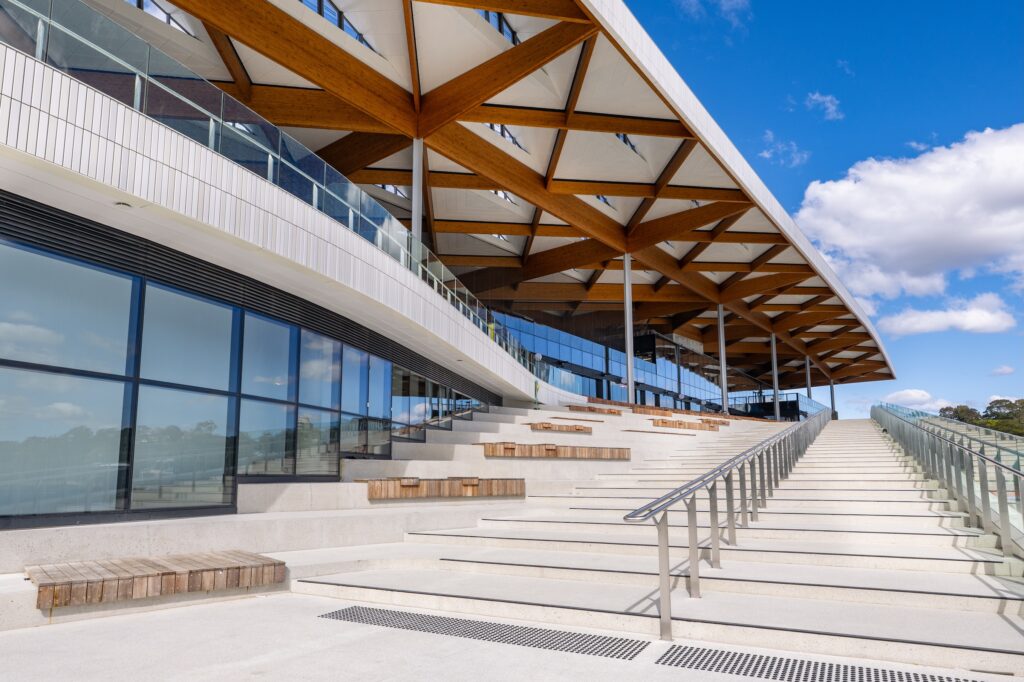
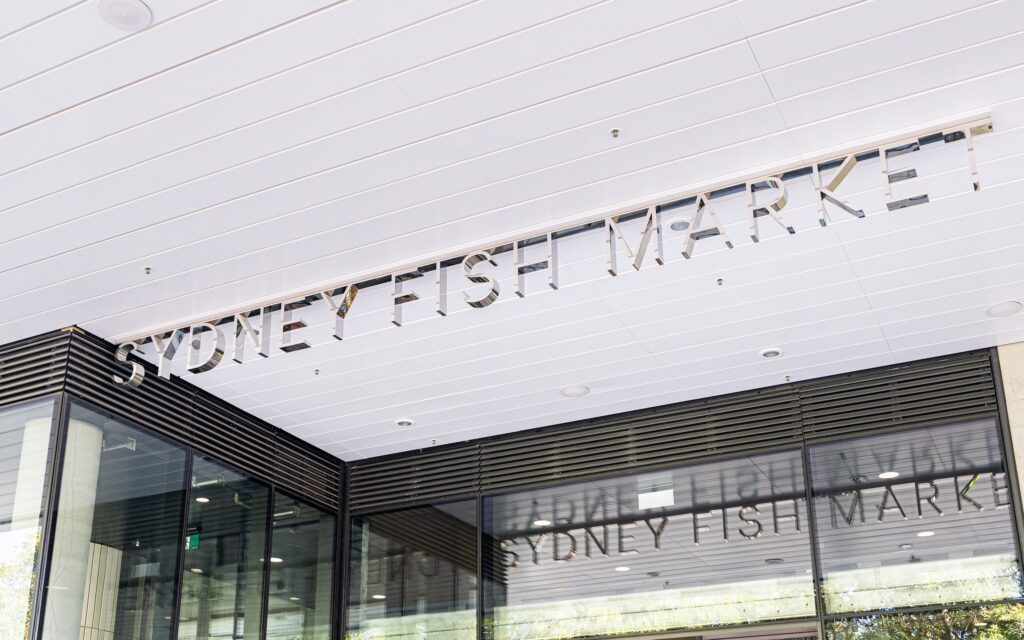
This remains, fundamentally, an authentic fish market. Every morning, the daily wholesale auction—conducted via computerized Dutch auction since 1989—brings Sydney's seafood retailers to bid on the night's catch. It's the lifeblood of Australia's $750 million seafood industry, and the new facility strengthens every link in that chain.
The current Sydney Fish Market, the world's third-largest, struggles to accommodate crowds during peak periods—Christmas, Easter, Lunar New Year, and summer weekends. The new building solves these capacity issues while maintaining the market's essential character: the smell of salt air, the bustle of serious shoppers, the theatre of commerce played out over ice-filled bins of prawns and oysters.
"This is Australia's home of seafood," Jarosch emphasizes. The new facility represents not just infrastructure but a $750 million injection of support for the national industry, complete with state-of-the-art auction floors, wholesale operations, and ice-making facilities—including a custom machine the size of a shipping container capable of producing 6,000 bags of ice daily.
Glass walkways allow visitors to peer down into the working wet market and classroom-style auction room, where buyers bid on the morning catch via app. It's transparency meets tradition, offering tourists and locals alike a front-row seat to Sydney's seafood supply chain.
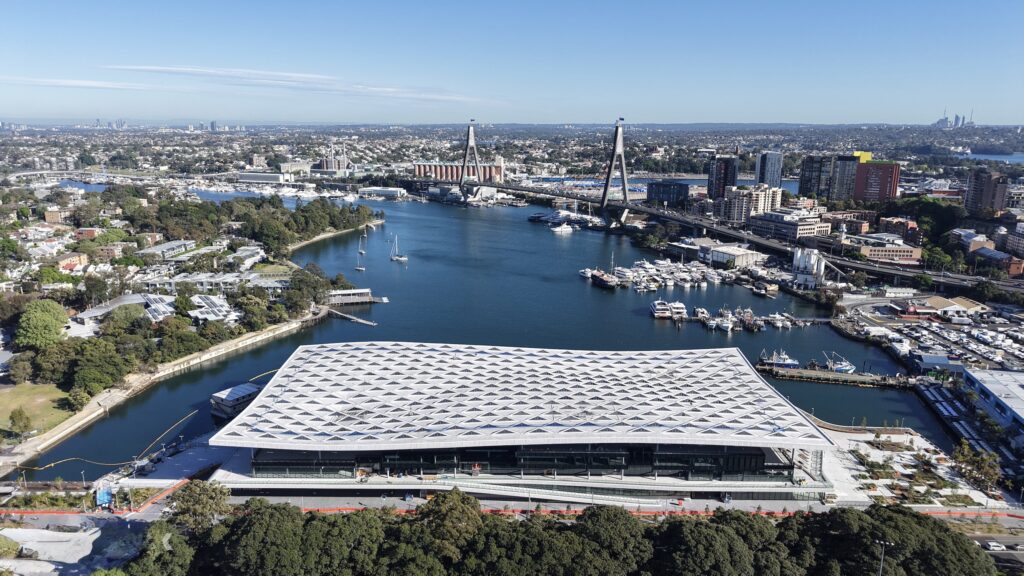
The market anchors a broader reimagining of Blackwattle Bay, part of the NSW Government's Bays Precinct masterplan. Almost 1.5 acres of new public space surrounds the building, including a waterfront promenade that connects to a 15-kilometer foreshore walk stretching from Rozelle Bay to Woolloomooloo. For the first time in generations, this stretch of harbour becomes accessible to the public.
Getting there has never been easier. Two light rail stops serve the market on the Inner West Line, with the Fish Market stop just steps from the entrance. A new ferry wharf, currently under construction, will connect Blackwattle Bay to Barangaroo and Circular Quay via the F10 service—what Transport Minister John Graham calls "perhaps the most scenic way to arrive at any fish market anywhere in the world." The 17-minute harbour crossing offers visitors the chance to approach this architectural wonder from the water, as it was meant to be seen.
Environmental credentials matter, too. The facility earned 5 Green Stars under the Green Building Council Australia's rating system through energy-efficient systems, water conservation measures, waste separation and recycling, low-impact materials, and sustainable transport integration. Those 400 solar panels on the roof aren't just for show—they're part of a comprehensive sustainability strategy.
Before the transition, the old Pyrmont site gets its proper send-off. This December 23rd, starting at 5am, the legendary 36-hour seafood marathon will run one final time. It's a Sydney institution—a round-the-clock buying frenzy where more than 150,000 people line up for their Christmas prawns, oysters, and bugs. Locals who've been making the pilgrimage for decades know this year's event will be special: the last chapter of a 60-year story.
"Seafood lovers are expected to turn out in record numbers," says Jarosch. "It's the end of an era and the beginning of something extraordinary."
And what happens to the old Pyrmont site? It won't sit empty. The NSW Government has fast-tracked redevelopment plans that will deliver more than 1,500 new homes—up from an original plan of 800 units. The rezoning, finalized in mid-2025, changed planning controls to allow 70 percent residential and 30 percent commercial development. Three major developers—Lendlease, Mirvac, and Stockland—are vying for the project, which will include a 7.5 percent affordable housing contribution.
It's part of a 30-year vision for the entire Bays Precinct: 95 hectares of government-owned land and 94 hectares of harbour waterways being transformed into mixed-use neighborhoods that blend housing, commerce, and public space. At the southern end, near the Anzac Bridge, a new 1.1-hectare park is being created. A future Pyrmont metro station, scheduled for 2032, will further enhance connectivity.
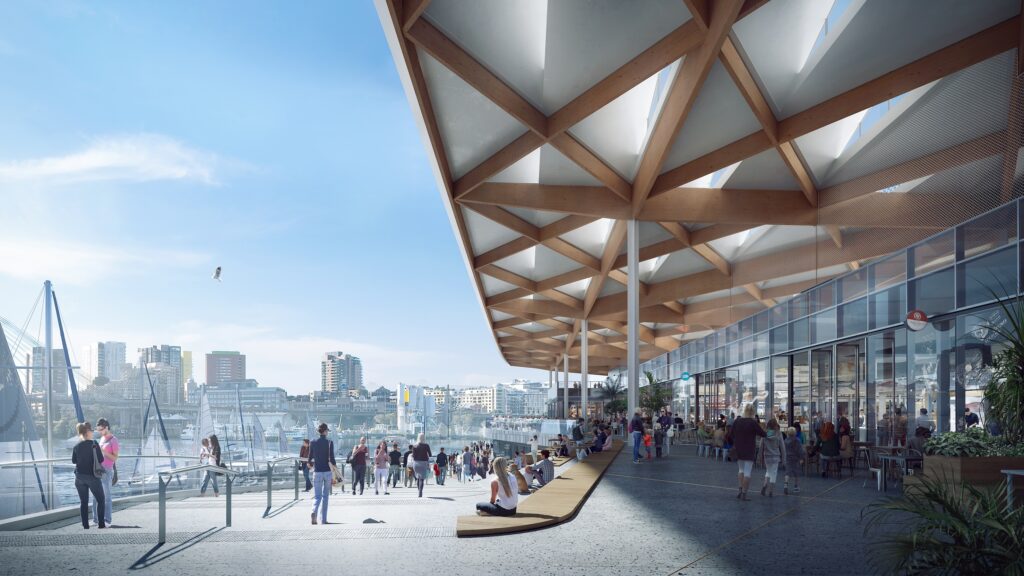
The new market is already being positioned as a cultural destination—a place for cooking classes, art installations, and evening events. With 700 operational jobs and economic forecasts predicting doubled visitor numbers over the next decade, it represents both a tourism magnet and a community anchor.
"We expect a lot of visitors who come to Sydney to spend an extra day," says Premier Minns, "as they take a cooking class, enjoy a meal, or watch a sunset."
Stand on the promenade at sunset, watching ferries cross the bay as the market's roof glows overhead, and you understand what makes this project special. It's not just about replacing an aging facility—it's Sydney reclaiming its waterfront, honoring its maritime heritage, and betting big on its culinary future.
The original Sydney Fish Market served the city well for nearly 60 years, growing from humble beginnings in 1966 into the world's third-largest seafood market. But it was landlocked, constrained, struggling to meet modern demands. The new building solves all those problems while creating something that didn't exist before: a world-class food destination that works seamlessly as both an authentic wholesale market and a tourist attraction.
If they're lucky, visitors might even catch the morning auction—a reminder that beneath the architectural grandeur and Instagram-worthy views, this remains what it's always been: a place where the ocean's bounty meets the city's hunger, where tradition and ambition shake hands across a counter piled high with ice and the day's fresh catch.
Just in a building that finally does justice to the product.
Travel Essentials
Opening: January 19, 2026
Location: Bridge Road, Blackwattle Bay (corner of Bank Street and Pyrmont Bridge Road)
Hours: 7am–10pm daily
Old Pyrmont site: Remains operational until January 19, 2026. Final 36-hour Christmas marathon begins 5am, December 23, 2025
Access: Light rail (Fish Market stop), ferry from Barangaroo (F10 service, launching 2026), bus, cycling and pedestrian paths
Admission: Free entry; pay only for purchases
Parking: Multi-level underground parking with short-stay drop-off zones
Website: sydneyfishmarket.com.au
Insider Tip: Visit the old Pyrmont site one last time during the December 2025 Christmas marathon for a nostalgic farewell, then arrive by light rail for the new market's morning auction experience on January 2026 opening day. Catch the ferry (launching in 2026) back to Barangaroo at sunset—the harbor views alone are worth the trip.
Photos credit : Multiplex and Infrastructure NSW